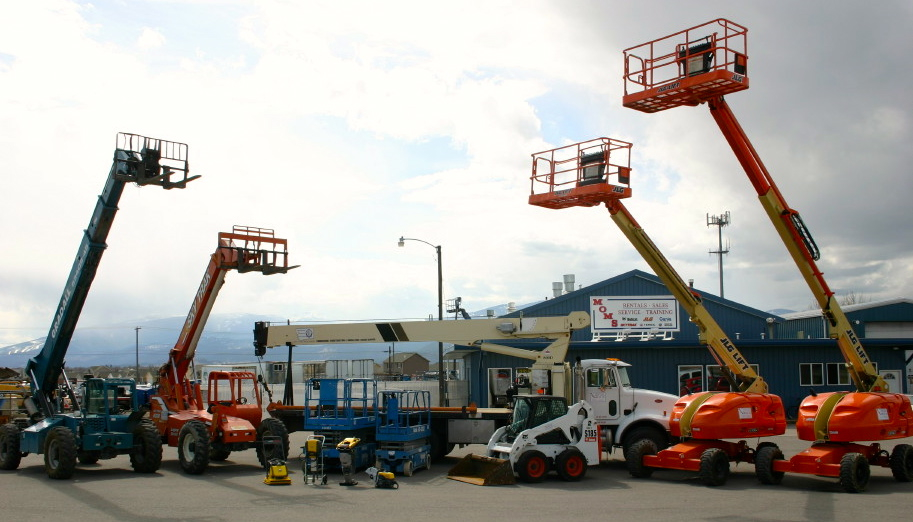Optimize Your Spending Plan by Recognizing the Prices Linked With Construction Tools Leasings
Comprehending the full range of expenses associated with construction devices services is vital for optimizing your budget. What methods can be used to effectively manage these expenses and make sure an extra efficient rental experience?
Introduction of Rental Costs
When taking into consideration building equipment leasings, understanding the linked expenses is extremely important for efficient budgeting and project preparation. Rental costs can differ significantly based upon a number of variables, consisting of equipment type, period of rental, and place. The first rental cost often shows the tools's market demand and its connected functional capabilities, influencing the general expenditure.
Along with the base rental price, secondary costs may emerge, such as transportation charges, gas surcharges, and maintenance fees. It is important to account for these extra costs to properly assess the overall expense of renting out equipment. The rental duration can impact prices; longer rentals may certify for discounted prices, while short-term services could sustain greater everyday fees.

Breakdown of Rental Rates
A comprehensive understanding of rental rates is essential for contractors and task supervisors aiming to optimize their budgets. Rental prices for building and construction equipment commonly contain a number of parts, including base rates, time-based fees, and usage costs.
Base rates are the core costs connected with the service of the devices, typically established by the kind and size of the equipment. These prices can vary dramatically, affected by elements such as tools need, availability, and local market patterns. Time-based charges, which might be daily, weekly, or monthly, offer to accommodate different project timelines and rental periods.
In addition, rental prices may consist of usage costs, which are appropriate when equipment is utilized past a specified limit, ensuring that the rental business can account for deterioration. Seasonal demand variations can also influence rental rates, with peak building and construction seasons typically commanding greater prices.
In addition, understanding the rental firm's policies relating to upkeep and insurance coverage can give further understanding into the general price structure. By examining these parts, specialists can make informed choices, making certain the choice of rental devices aligns with both job needs and budget constraints.
Added Fees to Consider
Understanding the complexities of extra charges is vital for service providers to handle their total service expenditures properly. Past the typical rental prices, numerous supplementary charges can significantly impact the total price of tools service. These costs commonly consist of shipment and pickup charges, which can vary based on range and logistics included in delivering the tools to and from the work website.
Moreover, some rental companies might impose fuel additional charges if the tools is returned with less fuel than when leased. It is additionally vital to understand potential cleansing charges, particularly for specialized tools that click here to find out more needs detailed maintenance after use.

Completely evaluating the rental arrangement and clearing up these additional costs in advance can help professionals make sure and stay clear of unexpected prices that budget plans continue to be intact throughout the task lifecycle.
Maintenance and Fixing Expenses
Normal repair and maintenance expenses are you can look here usually ignored factors that can dramatically influence the general price of building and construction devices leasings. When renting devices, it is critical to think about not just the rental fees however additionally the potential expenses associated with keeping the equipment in optimal operating condition.
Lots of rental firms include fundamental upkeep as part of the rental agreement; nevertheless, extra unforeseen failures or extensive repair work can bring about added expenses. It's crucial to review the rental contract very carefully to understand what upkeep solutions are covered and what obligations drop on the renter.
Moreover, devices that is not properly maintained can result in inadequacies on duty website, possibly creating hold-ups and raising job expenses. To alleviate these dangers, it is suggested to perform regular evaluations and maintain open communication with the rental copyright regarding any type of issues that develop throughout usage.
Insurance Policy and Obligation Prices
Insurance and liability expenses are vital parts that can significantly affect the total expense of building and construction tools services (dozer rental). These costs ensure that both the rental firm and the client are protected from possible monetary losses arising from crashes, damages, or theft throughout the rental period

Additionally, customers should be conscious of any type of deductibles or exclusions in the insurance coverage, as these can influence prospective out-of-pocket costs. Comprehending the terms of any kind of insurance coverage is important to stay clear of unforeseen prices. Ultimately, budgeting for insurance policy and liability costs can aid ensure a smoother rental experience and safeguard versus economic threats related to building and construction tasks.
Conclusion
In conclusion, an extensive understanding of the costs linked with building and construction devices rentals is important for effective spending plan monitoring. Eventually, informed decision-making pertaining to devices rentals adds to the overall success of construction endeavors.
Rental prices can vary considerably based on a number of factors, consisting of equipment type, period of service, and place (scissor lift rental). The rental duration can affect pricing; longer services might certify for discounted prices, while temporary services might sustain greater daily costs
By carrying out complete research and involving with respectable rental companies, specialists can efficiently browse the complexities of rental prices, inevitably maximizing their monetary sources.
Beyond the typical rental rates, different supplementary fees can dramatically affect the complete price of equipment service. Rental companies commonly provide liability insurance policy that covers injuries to 3rd parties or damage to home, while tools damages insurance can cover the expense of fixings or replacement if the rented devices is harmed.